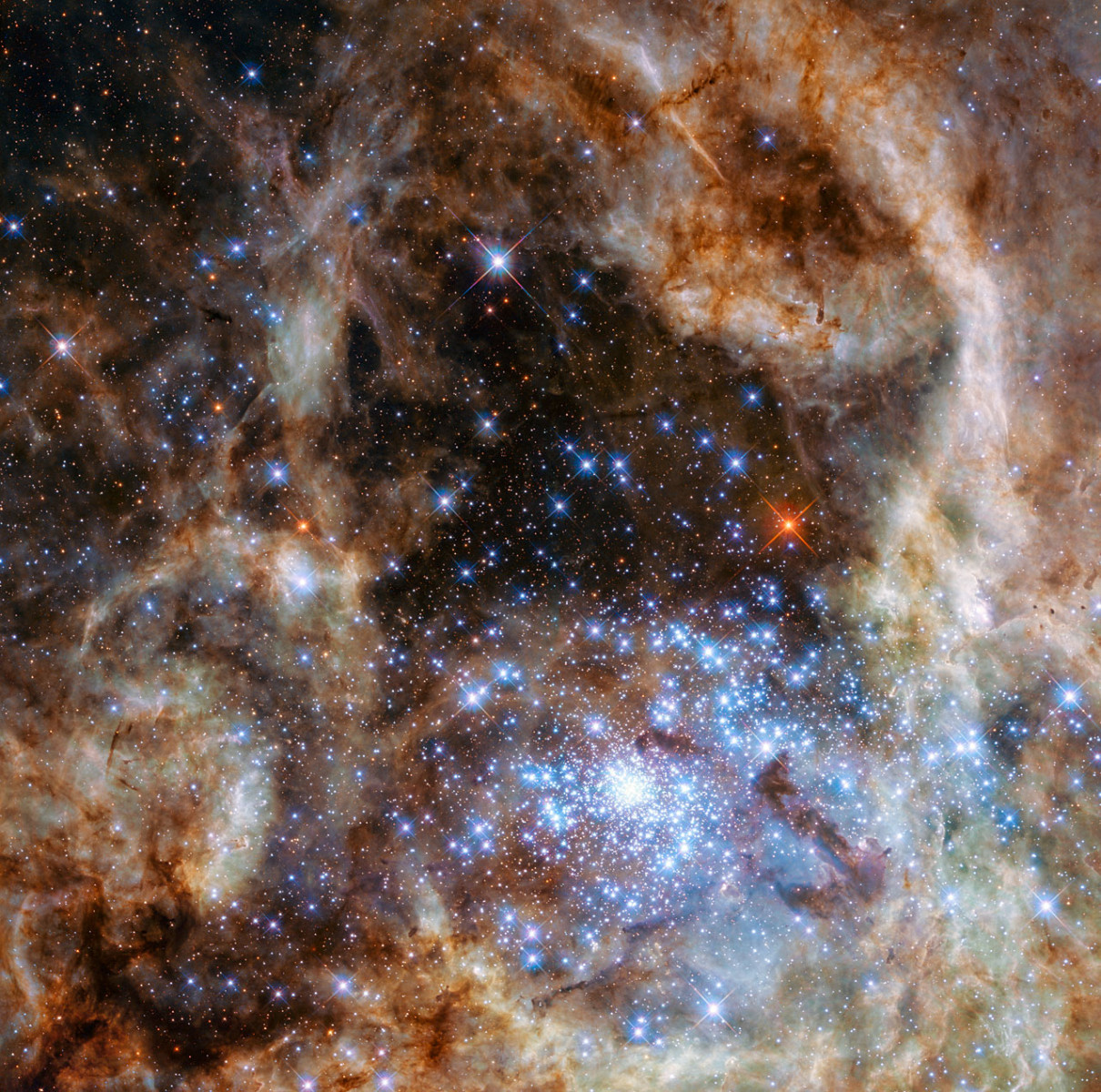
Source: Hubble Space Telescope h/t NY Mag
In the Tarantula Nebula, 170,000 light-years from Earth, there is a cluster of immense stars that make our sun look like a dinky twinkling speck, newly photographed by the Hubble Space Telescope. In that cluster, called R136, there are nine mon-stars (!) that are each more than 100 times the size of our sun, and lots more that are larger than 50 suns. The nine big ones combine to outshine the sun 30 million times over.
The cluster also contains the R136a1, the largest star ever found. Usually, bodies this massive are formed by the colliding and combining of smaller stars, but Saida Caballero-Nieves, a co-author of a (still unpublished) study of R136, explained in a statement that “from what we know about the frequency of massive mergers, this scenario can’t account for all the really massive stars that we see in R136.” So how did it get that way? “It would appear that such stars can originate from the star formation process.”

